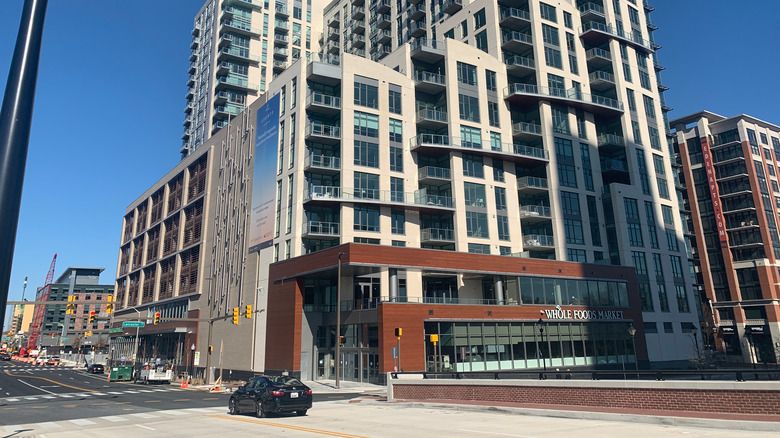Homes Near Whole Foods Cost Over $890,000 On Average
It's long been a truism in real estate, probably even before it was first articulated by 20th century British property tycoon Harold Samuel, credited with saying, "There are three things that matter in property: location, location, location." That, of course, is obvious to anyone who has ever bought or sold residential property. Proximity to employment opportunities, good schools, invigorating recreational and cultural opportunities, quality medical care, and businesses, like a good auto repair shop or grocery store, is a prime driver for residential real estate transactions. The reverse also is true: The primacy of location drives decisions by businesses regarding where they locate their enterprises, most definitely including grocery stores.
Grocery store chains, in particular, rely on demographics and other data when deciding where to locate new stores, as they look to maximize their return on investment in property and other business costs. The exact data they use is closely held, but a 2015 story in Washingtonian Magazine provided some insight into how the high-end natural and organic grocery chain Whole Foods, which currently operates more than 500 stores in the United States, makes those decisions. Scott Allshouse, president of Whole Foods' mid-Atlantic region, told the magazine that Whole Foods considers factors including "availability and cost of real estate, population density, education, demographics," and in its unique case, "the community's interest in natural and organic foods."
Location decisions by all grocery chains, specifically those with consumer cachet like upscale Whole Foods, quirky Trader Joe's, and budget Aldi, say something about the value of nearby residential real estate.
Grocery stores and residential real estate go hand in hand
A recent analysis by Attom Data Solutions showed that Whole Foods ranked second in terms of residential values within the same ZIP code as its stores, with an average value of $891,416. Trader Joe's topped the list, with nearby homes at an average of $987,923, and homes near Aldi stores ranked third, with an average nearby home value of $321,116. But Aldi is a growing enterprise opening dozens of new stores this year, which could be why homes near Aldi have had the highest price appreciation and return on investment.
Of the three chains, Trader Joe's offers an interesting story. While its prices are low, comparing favorably with Aldi, it offers an upscale shopping experience that appeals to higher-end consumers. A Freakonomics podcast citing the research firm AggData noted that Trader Joe's stores "are located in counties with higher household median income than any other grocery chain, including Whole Foods."
Whole Foods, though, is a superpower in terms of boosting economic development in neighborhoods where it places stores. In the Washingtonian story, Rushern Baker — then county executive for Prince George's County, Maryland, on the edge of Washington, D.C. — said, as paraphrased by the magazine, that an announcement that Whole Foods was coming to the county made it "significantly easier to convince other businesses to open in Prince George's." If you're house-hunting and feeling shocked by prices, then, just do a quick Google to see if Whole Foods could be the culprit.

